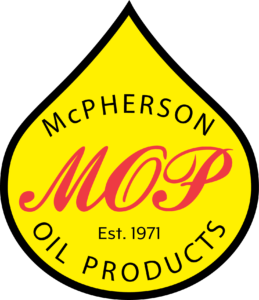Lubrication: A three-step plan to capitalize on an easy energy savings opportunity
29 May 2020, Posted by in Industry Information, Oil Tips When it comes to improving the energy efficiency of their operation, plant managers turn to many of the same low-hanging opportunities, such as lighting or HVAC.
When it comes to improving the energy efficiency of their operation, plant managers turn to many of the same low-hanging opportunities, such as lighting or HVAC.
However, while these are certainly easy areas to address, some operators overlook another low-hanging opportunity that can have an even bigger impact on total energy use – lubrication.
Lubrication is the lifeblood of any machine, and it can do a lot more than just keep parts clean and protected against wear, corrosion, and contamination. In fact, making a switch to an advanced lubricant can help improve a machine’s mechanical efficiency by reducing friction at moving surfaces and reducing fluid losses from oil churn and pumping.
This is an important benefit because, in many industries, process equipment accounts for a significant percentage of an operation’s total energy consumption. And, reducing equipment energy consumption by even a couple of percentage points can add up quickly when accounting for the entire system.
For example, one Minnesota mine was able to reduce energy consumption in its gearboxes by 1 percent, which saved approximately $8,800 annually per gearbox.
So, as an industrial operator, what can you do to take advantage of lubrication as an energy savings opportunity? Here are three basic steps that can help you get a head start:
- Properly evaluate and measure the lubrication-related energy savings opportunity
Before making the switch to a new lubricant, you should assess the scope of the energy savings opportunity. Importantly, energy savings can be defined in two ways – using less energy to do the same work or consuming the same amount of energy to do more work. For example, in a plastics operation, energy use may be assessed either by measuring the delta kWh consumed for producing a set number of plastic bottles or by measuring the number of plastic bottles produced per kWh used.
With that in mind, evaluating and measuring the savings opportunity starts with determining the energy savings goals. Is the goal to reduce energy consumption or to increase production output for the same energy input?
To determine how to enhance equipment performance to reach those energy savings goals, you should collect as much information as they can about the target application, including historical performance data and typical operating conditions.
Next, you want to define the relevant energy efficiency and production rate measurements, as well as the duration of the measurement campaign. When defining measurements, you should consider key indicators (such as the energy consumed by the application and the production output of the application) as well as any other factors that may influence the energy efficiency of the equipment (such as operating temperature). You’ll also want to define the duration of the measurement campaign to ensure it provides you with the insights you need. You must establish a long enough measurement period to properly assess if the potential energy savings are being realized.
You should then develop a formal protocol to evaluate the opportunity, using the measurement parameters defined in the previous step. Often, you can work with your lubricant supplier to build the protocol – either using their preferred approach or leveraging their application expertise to build a protocol tailored for your operation. Once the measurement campaign is complete, it’s critical to formally document the results to help you assess if the new lubricant can help you achieve your energy savings goals.
- Look for high-performance lubricants that offer energy efficiency benefits
Not all advanced lubricants offer meaningful energy efficiency benefits, so operators should work closely with their lubricant suppliers to identify the right lubricant technologies.
However, there are typically at least one or two technologies available for many of the most energy-intensive applications.
For example, electric motors consume an enormous amount of energy, accounting for approximately 40 percent of total global energy consumption today. Switching the grease used to lubricate the bearings in these motors can have a much bigger impact than it may seem. Mobil SHC Polyrex 102 EM is a new grease technology that reduces torque by up to 40 percent compared with mineral-based alternatives, resulting in an increased motor efficiency of up to 0.24 percent.
That may not seem like a lot, but for a plant running 100 electric motors, that can mean thousands of dollars in annual savings.
Hydraulic oils – used across a range of industries – are another energy efficiency opportunity. One plastics manufacturer in Wisconsin recently reduced the energy consumption of one of its plastic injection molding machines by 3.3 percent. As a result of that study, the specific hydraulic oil technology was verified as an energy-efficient technology by Wisconsin’s statewide energy efficiency program, the first lubricant to receive that accolade.
- It’s not a “set it and forget it” approach – continuous monitoring is key
Even after you’ve measured the savings opportunity and selected the right lubricant technology, ensuring longterm performance demands continuous lubricant monitoring.
Used oil analysis, in particular, is a critical tool. It can identify the presence of wear metals and other contaminants while also flagging any concerning changes in key performance parameters such as increased viscosity, which may cause drag and reduce energy efficiency. By implementing a regular, consistent UOA program, you can address most lubrication issues before they become a problem, keeping your lubricants running strong and helping you optimize equipment efficiency.
These steps outline a basic approach to helping improve equipment energy efficiency through lubrication. For a more comprehensive understanding, reach out to your lubricant supplier, who can help provide additional insights and strategies.
* Courtesy of Alan Suan for ClubMobil Industrial from ExxonMobil
